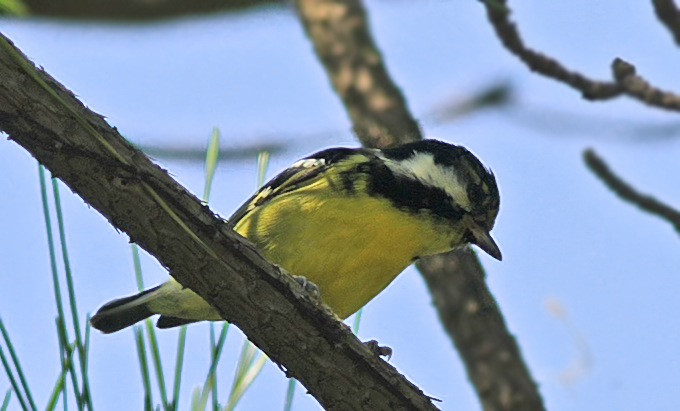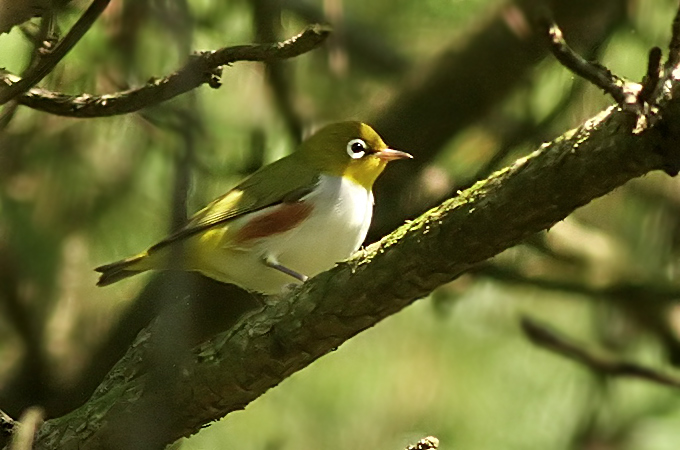 | E-mail to Birds Korea |
 | KWBS |
in the Region
 | The Oriental Bird Club |
 | BirdLife International (Asia) |
October
Warm (typically between 15-20°C mid-month), with often excellent birding weather: dry, sunny, and relatively calm. Occasional rain, although uncomfortable for birdwatchers, can produce excellent falls. One of the best times to be birding in Korea! Autumn migration is in full swing, and anything is possible!
Black-faced Spoonbill and Chinese Egret are still reasonably widespread. Hooded and White-naped Cranes start moving back south into Korea, and huge concentrations of Tundra Beans and Greater White-fronted Geese form at the Han-Imjin and Seosan. The charismatic Baikal Teal arrives in force mid-month, with up to 300,000 at Seosan and Haenam! Raptor migration is often strong, with Grey-faced Buzzards (day peak of 1,500 on Gageo Island), Oriental Honey Buzzards, the occasional eagle (especially Greater Spotted), and in some years, flocks of Amur Falcon. Shorebirds are still present in good numbers and persity, with a peak in Nordmann’s Greenshank. Visible migration peaks with Olive-backed Pipits becoming numerous by mid-month along the west coast, plus often excellent numbers of buntings and flycatchers. Pale, White’s, and small numbers of Dusky Thrushes are also on the move, along with the first of the typical winter passerines - Brambling and Siskin.
In 2005 the country’s first Swinhoe’s Rail in 70 years was reported from Hong Island, while recent Korean firsts for this month include Yellow-bellied Tit on Socheong in 2005 and Booted Eagle on Heuksan Island in 2006.
(The following records are a compilation of our own sightings and records sent in by other observers. As well as being posted on the Birds Korea website(s), selected records are also forwarded to other Korean-language birding websites; records of threatened species are arranged and forwarded to Birdlife International and national authorities when appropriate; flag images and records are passed to bodies responsible for their coordination throughout the flyway; and all records sent to us are used to compile annual reports and to support the evolving understanding of the status of many of Korea’s birds.)
Gageo Island, Shinan County, October 27-November 1
In total 110 species recorded, with between 66 and 83 species recorded daily. Winds remained stubbornly to the north or northeast, and skies largely fair, with the only precipitation being several rain showers on 27th and a 30-minute spell of rain on October 31st. Numbers of most irruptive migrants (the only exception being Eurasian Siskin) fell steadily during this period. Highlights (with all images taken with a hand-held Nikon P7100 through a SUPERB Swarvoski scope) included:
Amur Falcon: One feeding actively at 2-Gu on the evening of 31st.
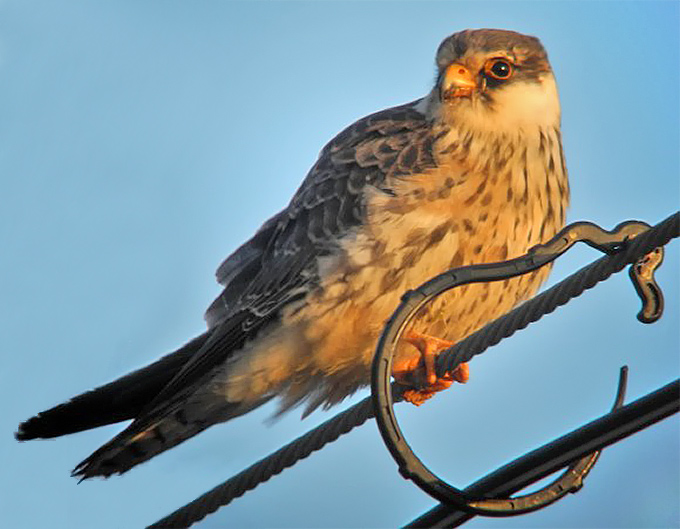
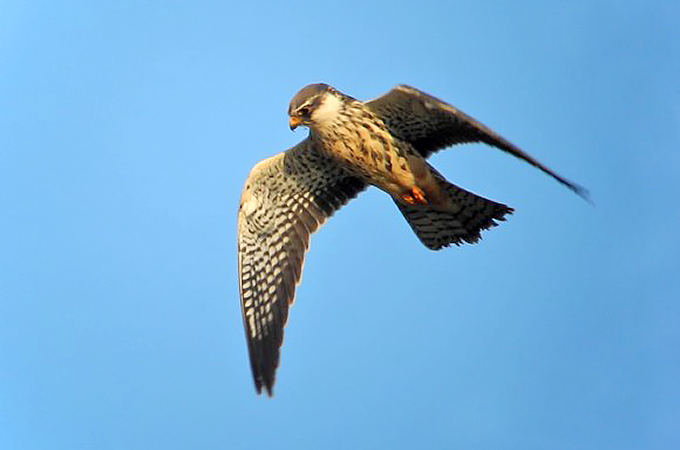
Northern Lapwing: One between 29th and 31st in 1-gu is perhaps only the second record for Gageo (the last being more than 10 years ago).
Red Turtle Dove: One (presumed First-winter male) was seen briefly at 2-Gu on 27th. This species is recorded scarcely annually in the ROK.
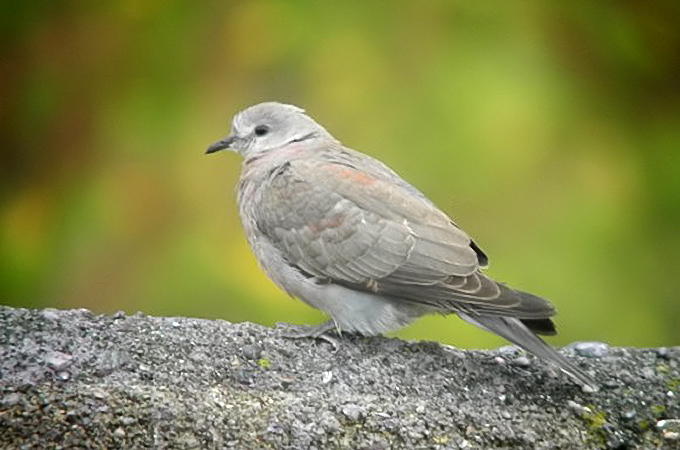
Eurasian Magpie: One arrived in 1-Gu on 29th and was still present on November 1st.
Rook: A maximum of four were present on 30th. All corvids are very scarce on Gageo.
Yellow-bellied Tit: 10+ were present on 27th, with numbers falling steadily through the period, and the last being seen on 31st.
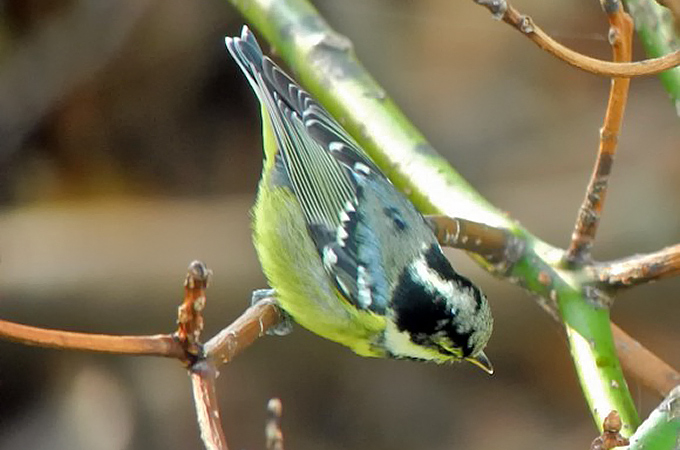
Siberian Chiffchaff: One was present in 1-Gu early in the morning of 28th. Based on its strong wing-bar and lack of yellow on the wing-bend this is believed to be a different individual to that on the 21st. There are still probably fewer than 20 national records of this species: however, this is the fourth recorded on Gageo just this year.

Arctic Warbler sensu lato: Both single Kamchatka Leaf Warbler (examinandus) and Japanese / Pacific Leaf Warbler (xanthodryas) were believed heard calling in 1-Gu. The only individual that was well seen (on November 1st) appeared exceptionally green on the upperparts, and showed much yellow in the supercilium and ear coverts, as well as on much of the underparts. While it is tempting to claim this individual as a Pacific Leaf Warbler, it appeared rather small and was not heard to call. Can other yellow-tinged taxa (like kennicotti) be ruled out? We would welcome receiving expert advice and published articles on how to separate these taxa in the field!
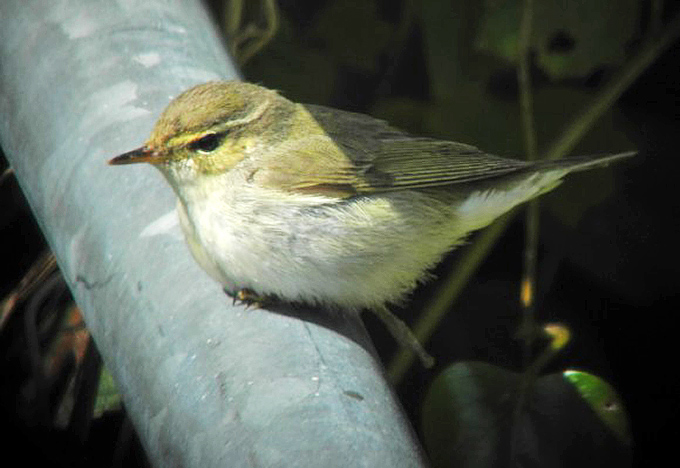
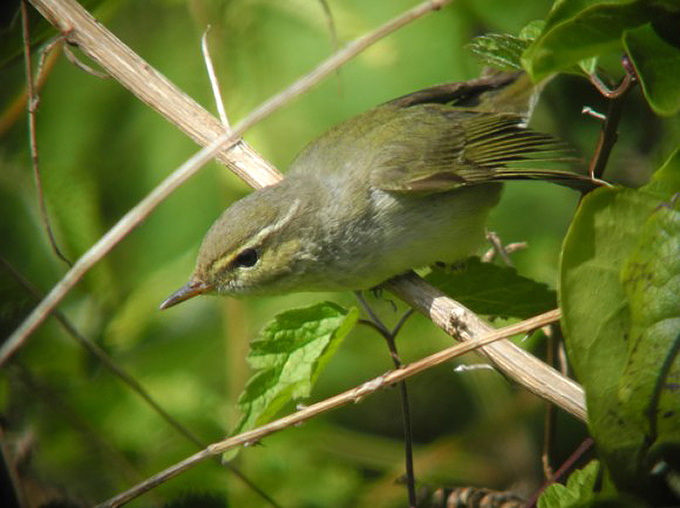
Hume’s Leaf Warbler: One on November 1st (which was much easier to ID than the above!).
Chinese Nuthatch: In some ways, perhaps the most extraordinary record on Gageo this autumn so far – suggesting that this year’s irruption could result in this species turning up anywhere in the ROK (and perhaps also in eastern China or even Japan?). One possible was heard on October 30th and presumably the same individual was digiscoped (terribly!) on November 1st, both times in the quarry in 1-Gu.
Siberian Stonechat: Between 20 and 40 present daily. All are believed to be Stejneger’s Stonechat Saxicola stejnegeri , recognised as a full species (distinct from both European S. rubicola and Siberian Stonechat S. maurus) in version 3.2 of the Checklist of the International Ornithological Congress. As such, this species will be listed in the next update of the Birds Korea checklist. Details are now being sought on how to separate Stejneger’s from Siberian Stonechat on field-views (for example, do maurus also sometimes show dark marks on the longest uppertail coverts, shown by probably 1 in 4 of the stejnegeri seen on Gageo this autumn)..

Red-breasted Flycatcher: One was seen and heard well (in the same view as a Taiga Flycatcher!) in 1-Gu on 31st. Red-breasted Flycatcher appears to be a very scarce but predictable late-autumn visitor to the ROK.
Siberian Accentor: Typically rather scarce on Gageo, even in good winters for the species on the mainland. The first personal records of the autumn were on October 30th, with two present on 31st and November 1st.
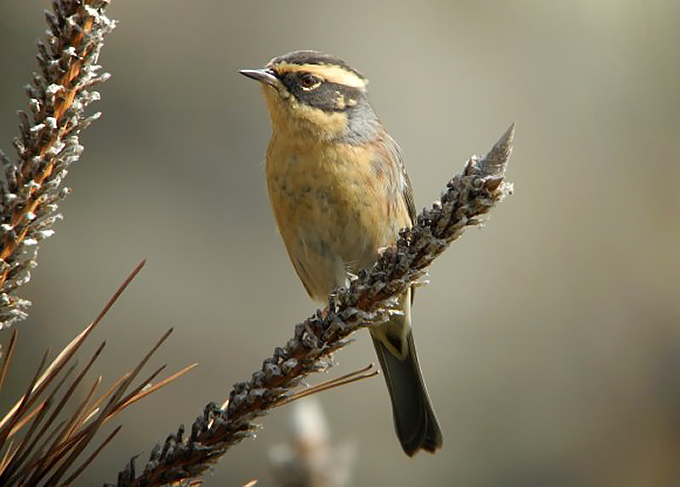
Red Crossbill: A female flew west on 30th.
Eurasian Bullfinch: A small flock was heard (but not seen) on 30th. This is my / the (?) second record of the species on Gageo (first was in January 2009), although it is not yet listed for the county by Lee Kyung-Gyu.
Pine Bunting: Three together were in a mixed bunting flock in the 1-Gu quarry on the evening of November 1st.

Black-headed Bunting: The 2-Gu bird remained present and confiding throughout the period.

Deokjeok Island, October 28
A quick day-trip to Deokjeok-do, one of the onshore islands, an hours ferry ride from Incheon, provided an ideal way to make most of a wonderful and sunny Sunday. Even though not as good as Seochong and often teeming with tourists, Doekjeok-do, in my opinion can still surprise at times. This coupled with its ease of accessibility makes it an ideal place for “weekend birders”.
Though it lacked in the number of species that I’d encountered there in spring, one thing that was present in plenty on the island were Buntings. Within minutes of my arrival, I encountered a flock of Yellow-throated Buntings numbering more than a hundred birds. During my 5hr stay on the island, I found 3 more flocks of similar (and perhaps larger) size. Other species included Yellow-browed Bunting (~120), Black-faced Bunting (~300), Rustic Bunting (~70), a couple dozen Tristram’s Bunting and a single Little Bunting. Owing to a wide range of habitats and the relative ease of accessing them, birding on this island is quite easy. Other birds of note were significant numbers of Goldcrests and Eurasian Siskins.
Walking along the rice fields on the southern part of the island, I had a close encounter with a Common Buzzard and a particularly rotund bird, whose plumage looked rather interesting. Inspite of the initial excitement, upon closer observation and photographic records, it turned out to be a Siberian Stonechat (a total of 5 spotted that day). The highlight of the day (at least for me) came minutes before boarding the return ferry, in form of a Common Crossbill.
Taejongdae, Busan, October 28
After a long, rainy, bird-less Saturday, I woke up early and headed to the park for some Sunday fun day. Eastern Great Tit were in good numbers, and there was a noticeable presence of Goldcrest moving through the pines. There were a few Varied Tit, Japanese White-eye, Pale Thrush, a couple of White-backed Woodpeckers, a Grey-headed Woodpecker, and a lone Hawfinch bravely feeding on the busy footpath. As the morning grew, more people started to pour in. I looked up at the sky and saw raptors soaring, so I headed to a nearby mountainside for a better view.
This was a great decision. At a resting spot on the south-eastern face of the mountain opposite the sea, from about 12:40 to 14:40, I counted 13 Eastern Buzzards, 2 Goshawks, 2 Northern Hobby, 6 Black Kite, and a steady flow of more than 160 Eurasian Sparrowhawks. All seemed to follow the same route, steadily hugging the coastline in a westerly direction. Even with all this excitement, the highlight of the afternoon made this visit superb: a gorgeous Black Stork moving in the same direction.


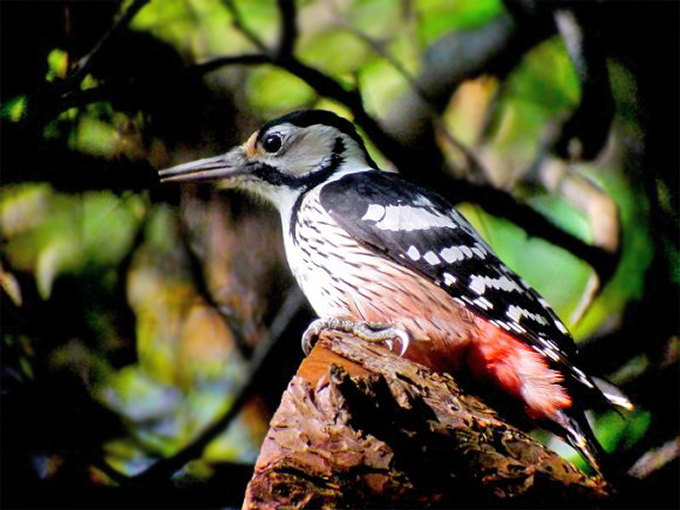
Geoje-do, October 21 - 28
It’s starting to feel like late fall in Korea, with crisp temperatures at night. It’s also been a fruitful week of birding on Geoje, with over 60 species seen. The ducks of winter have started to trickle in, with several hundred Spot-billed Duck spotted on the island’s bodies of water, as well as small numbers of Mallard, Eurasian Teal, Gadwall, Eurasian Wigeon, Greater Scaup, in addition to several Common Coot. Returning Little Grebe and Black-headed Gull add to the wintery feel.
Also of note this week were three Long-billed Plovers (which I only see in winter here), about 15 Eastern Buzzard,
a good mix of Woodpeckers (Japanese Pygmy, Great Spotted, White-backed, and Grey-headed), still high double-digit flocks of Eurasian Siskin at several mountain locations, and groups of 6-20 Yellow-browed Warbler mixed in with flocks of mostly Long-tailed Tits at the bases of two separate mountains. A nice treat on the 28th was a large and raucus parliament of at least 450 Rooks, with a dapper Daurian Jackdaw thrown in for contrast. Nearby, I also had a thrilling close encounter with an aggressive Tiger Keelback as the sun set.
Best of the week was a female Grey Bunting seen skulking near a small mountain stream relatively close to downtown Gohyeon, early on the morning of October 21st.

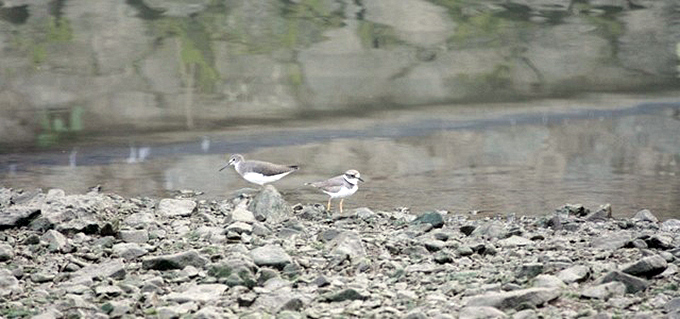
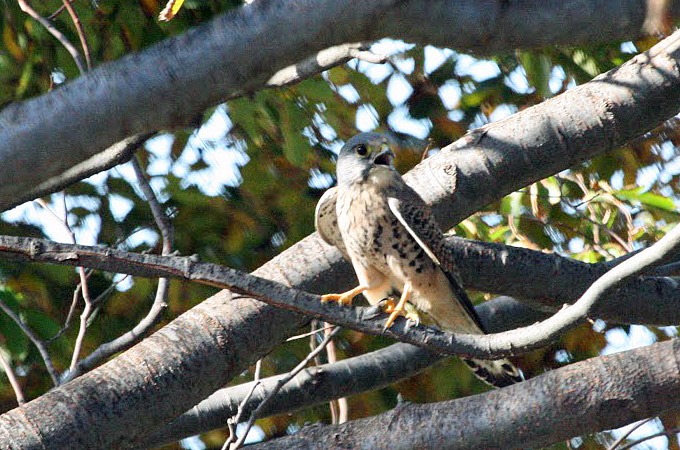


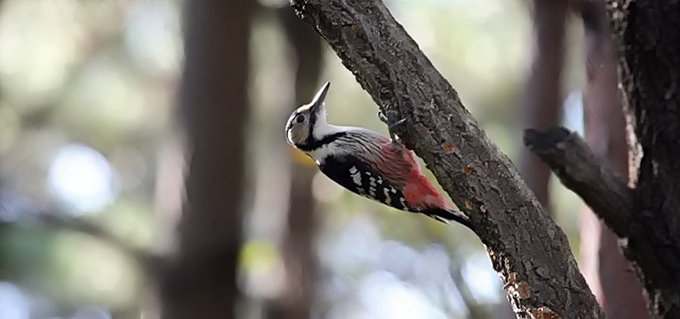
Seosan, October 27
At Seosan enjoyable views of tens of thousands of Tundra Bean and Greater White-fronted Geese, the latter forming almost pure flocks in areas of grass or turf. Also present, a Snow Goose, a handful of Eurasian Spoonbill, two Eastern Buzzard and a swirling Siskin flock (of c. 50 individuals).
Among some 300 Dunlin and several Common Snipe in flooded fields adjacent to the sea wall, late shorebirds included a Black-tailed Godwit, a Spotted Redshank, c.50 Common Greenshank and 3 Mongolian Plover. In damp meadows were 6 Buff-bellied Pipit and c.10 Red-throated Pipit, being chased by one of several Chestnut-eared Bunting. Fluttering over the water, several Barn Swallows and Sand Martins still.
In the reedy upper reaches, a roving Hen Harrier. The daylight closed on the sight of a determined Peregrine downing an unfortunate Teal.

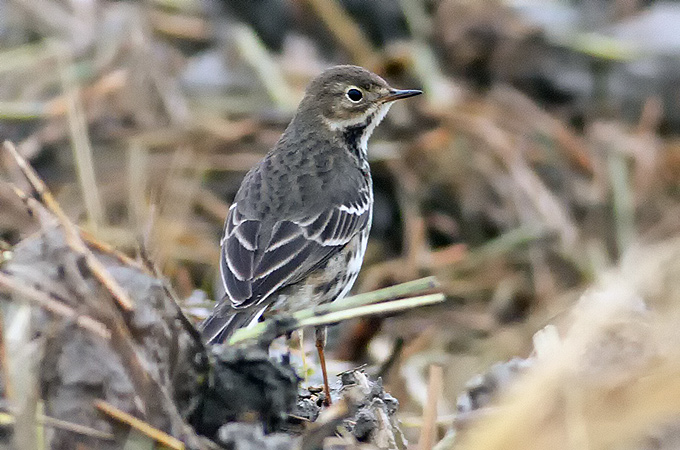
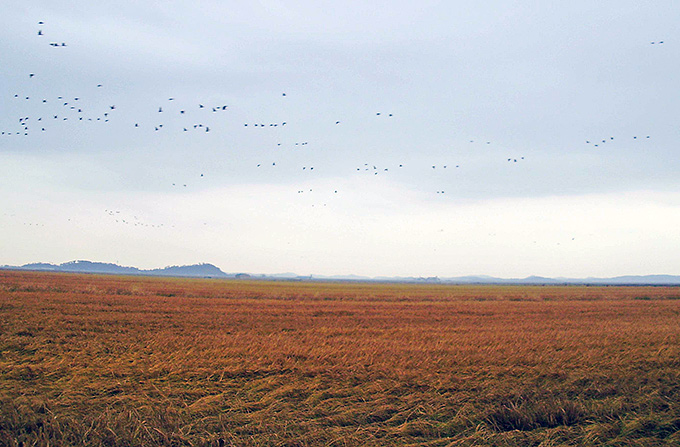
Gageo Island, Shinan County, October 21 - 26
Over 100 species recorded between October 21st and 26th, with 86 species recorded on October 24th (when both 1-Gu and 2-Gu were surveyed). In addition to high numbers of winter finches (e.g. 1,100 Eurasian Siskin and 90 Hawfinch on 24th and 650 Brambling and a Redpoll sp heard on 26th) selected highlights include:
Eurasian Coot: One on 25th and 26th. First island record?
Black Stork: One briefly on 22nd (also seen on 21st by a visiting film-crew). Apparently one was taken into care earlier this month (via Go Gyoung-nam).
White-tailed Eagle: An adult was in the harbour on 25th and 26th.
Great Spotted Woodpecker: Present daily with 2-4 in 1-Gu, and 12 counted in 1-Gu and 2-Gu on 24th. This species is not listed for Shinan County by Lee Gyung-Kyu and appears to be undergoing a decent-sized irruption this autumn. Subspecies appears to be japonicus, which breeds on the Korea Peninsula and adjacent regions.
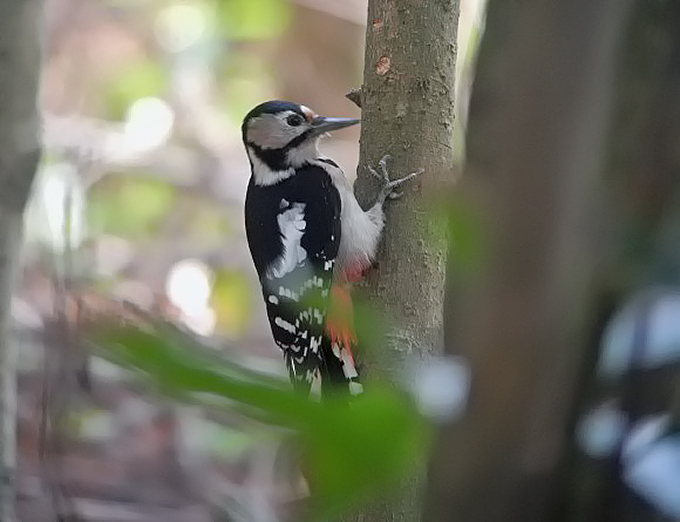
Long-tailed Shrike: At least two and possibly three present in 1-Gu, and at least six counted on October 24th in 1-Gu and 2-Gu.
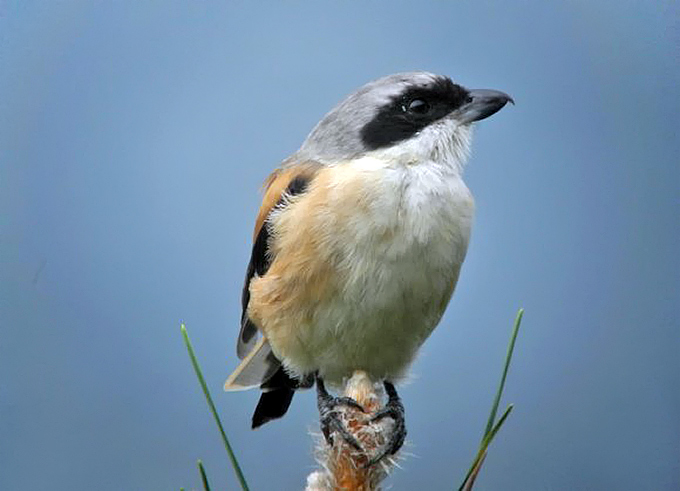
Yellow-bellied Tit: First noted on the 24th (a single), increasing to 25+ on 26th. This species was apparently previously unrecorded on Gageo.
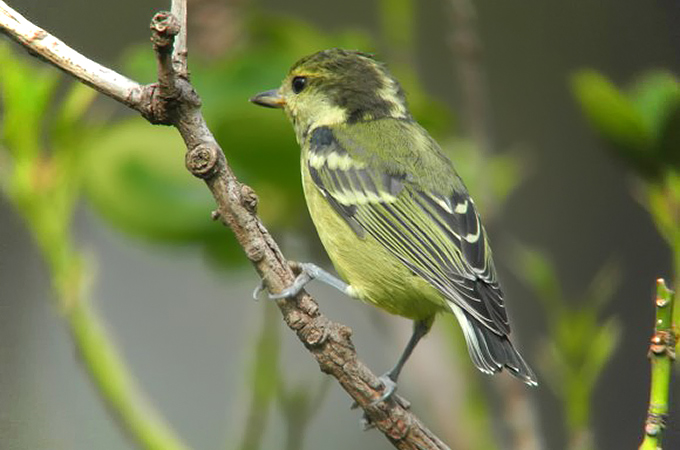

Eastern Great Tit: Present in higher-than-average numbers, with 375 recorded on 24th when both 1-Gu and 2-Gu were surveyed. This total includes several small flocks seen heading out west to sea. The species is undergoing a fairly major irruption, as the maximum count of the species on the island during near-monthly survey in 2009/2010 was 20.
Eurasian Crag Martin: A probable was seen briefly in heavy rain on 22nd, mixed in with a flock of 180 Asian House Martin.
Long-tailed Tit: Five (subspecies magnus) were in 1-Gu on 24th. This is perhaps the first record for Gageo.
Siberian Chiffchaff: One was poorly photographed on 21st.

White Wagtail: One of subspecies alboides (previously unrecorded in the ROK) or personata (perhaps two previous ROK records) was in a mixed group of wagtails at the 1-Gu rubbish dump on 22nd and 23rd. Prof. Per Alstrom has been contacted, and will likely help to confirm subspecific identification shortly…

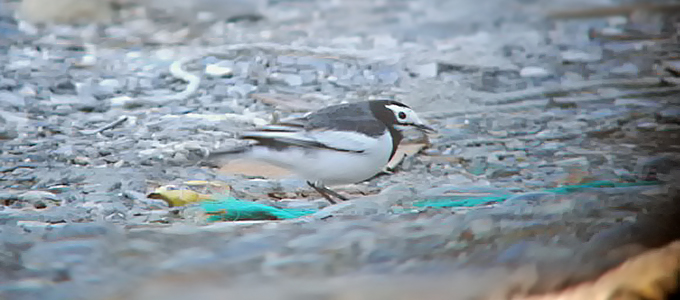
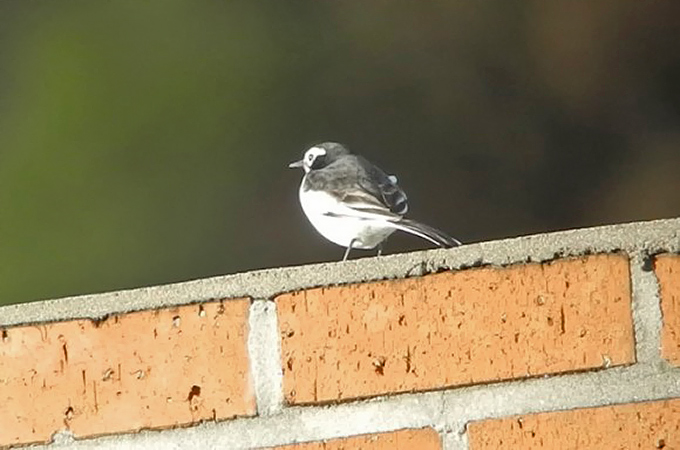
Black-headed Bunting: A very washed out First Calendar Year was found in 1-Gu on 22nd, and was glimpsed there again on 23rd. The same, or rather more likely a different (rather better coloured) individual was then found in 2-Gu on 24th. There are still probably fewer than 20 national records of this species, with most from Eocheong during northward migration.
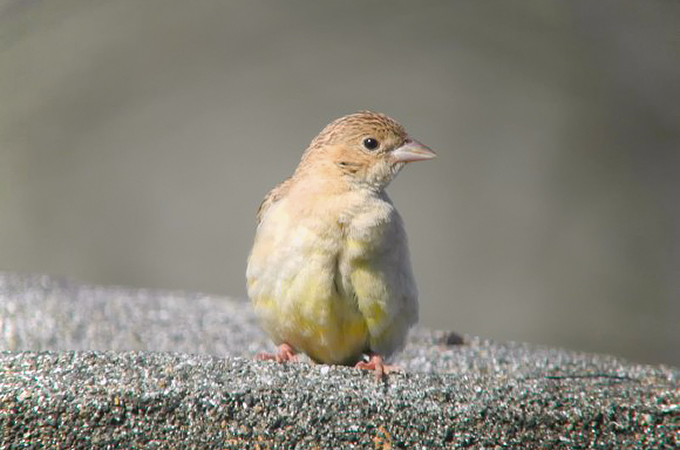
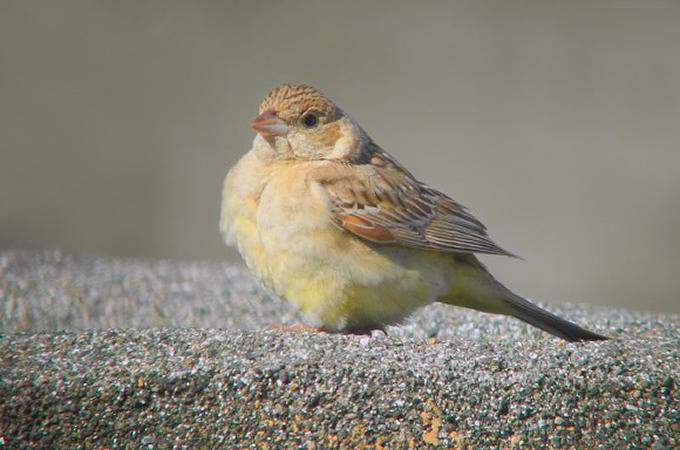

Identification from Red-headed was based on its large-looking, conical bill; the warmth in some of the upperpart tones (including on the scapulars and rump); the heaviness of the crown streaking; the presence of several darker streaks in the ear coverts; and the pale throat contrasting with otherwise yellow-washed underparts. Informed comments from those with much experience of these difficult taxa would still be most welcome, however!
Yubu-do, Saemangeum, & Cheonsu Bay, October 20 - 21
I had an amazing weekend beginning with a lecture to a small group of students given by Dr. Nigel Clark, Head of Projects at BTO and very actively involved in Spoon-billed Sandpiper conservation. I was invited by the organiser of the event, Kim Han Kyu, of the University Student’s Association of Wild Bird Society. In Dr. Clark’s lecture, he described the severe rate of decline of Spoon-billed Sandpiper, its migration, the limitations and threats on its breeding, staging, and wintering grounds, and details of its conservation measures and challenges. It was a fascinating lecture. Very thankful to Dr. Clark for sharing his valuable time and expertise with us and to Kim Han Kyu for his invitation and organising of the event.
After the lecture, we set off on a birding adventure starting at Yubu-do in the evening and continuing again early the following morning. There were several thousand shorebirds including our target species: the Critically Endangered Spoon-billed Sandpiper. After the excitement of finding and observing 3 Spoonies (2 juvenile, and 1 non-breeding), we headed to Cheonsu Bay to see what else was possible.
In route we visited some of the many gut-wrenching sites of the Saemangeum Reclamation area. Although I have visited these sites before, it is always devastating to see this kind of destruction on such a massive scale. Every time I can’t help but ask whether it is reversible. I certainly hope something changes. As for birding, we only visited a short segment of the airport (Saemangeum) and saw very few shorebirds but did see a rather large flock of Greater Scaup with a few Great Crested Grebes in the mix.
Of course, having seen 3 Spoon-billed Sandpipers, I was feeling very satisfied with the trip, but then the heat was severely turned up with the highlight of the afternoon (for some, highlight of the year), a Red-breasted Goose ! This was an extraordinary moment for us and it is the only record of the species in the Republic of Korea. It was epic !
Other highlights at and around Cheonsu Bay included large flocks of White-fronted and Bean Goose (20,000 +), Hooded Crane (3) <*personal first for the season>, Ruddy Shelduck (5), Temminck’s Stint from afar (4-5) <*personal first>, Wood Sandpiper (2), Marsh Sandpiper (3), Chinese Egret (1), Eurasian Spoonbill (39), Eastern Buzzard (3), Northern Hobby (1), Black-faced Bunting (9), and Bull-headed Shrike (4).

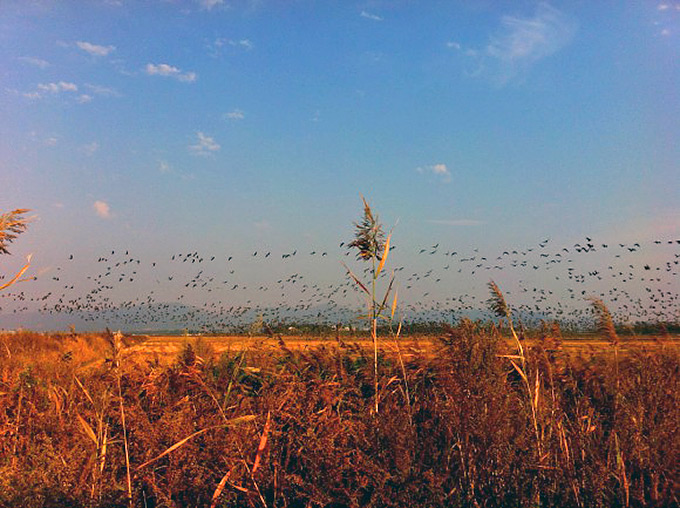

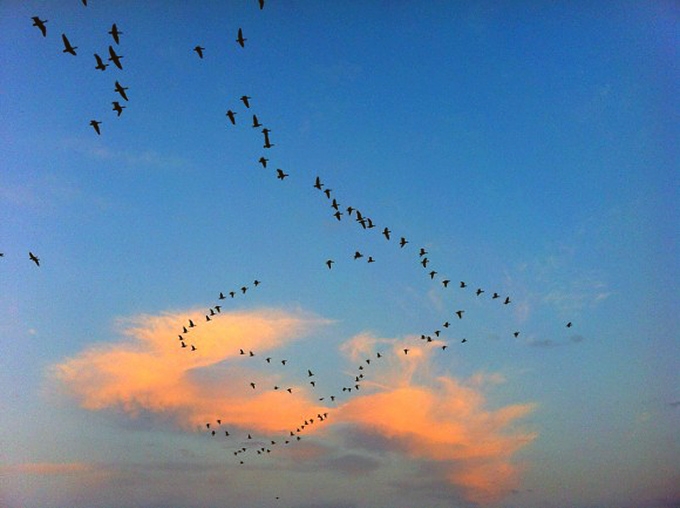
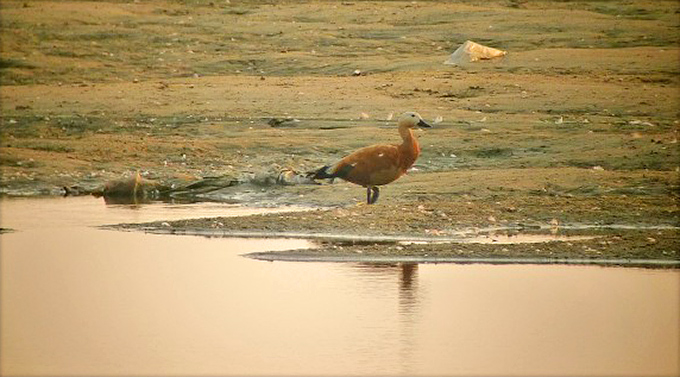
Igidae, Busan, October 10
Eight hours at Igidae (from 0645) under clear skies with light winds failed to relocate the presumed Northern Great Tit seen on the 16th. Numbers of Eastern Great Tit were much reduced (c. 60 feeding in total, and another 30 or so watched towering and heading out to sea). However, the birds that were present included one with a distinctive pale yellow blush on the underparts, and a slightly stronger green tone to the upperparts (this in direct comparison with several other Eastern Great Tit in the same tree). As this bird was otherwise clearly an Eastern Great Tit, this either is toward the extreme end of brightness (being pretty much as yellow-washed as any I have seen in more than two decades) or much less plausibly (considering the rarity of hybrids of these taxa, especially relative to their total populations) a hybrid Eastern x Northern.
Although tit numbers were down the area remains birdy, with the Long-tailed Shrike still (with an increasingly ragged-looking tail), 3-4 Bull-headed Shrike, the personal first Daurian Jackdaw (one in with 55 Rook), Buff-bellied Pipit (2-3) and Rustic Bunting (2) of the autumn, several groups of Eurasian Siskin through, and c. 500 Brown-eared Bulbul south in six different flocks . Further outstanding highlights included single Amur Falcon, Purple Heron and Rough-legged Buzzard (the latter two species my personal first in Busan) in addition to another “odd” rather small, oddly-proportioned buzzard with extensive whitish primary bases, and a strongly rufous-orange toned tail with paler base and broader sub-terminal band. Great urban birding!
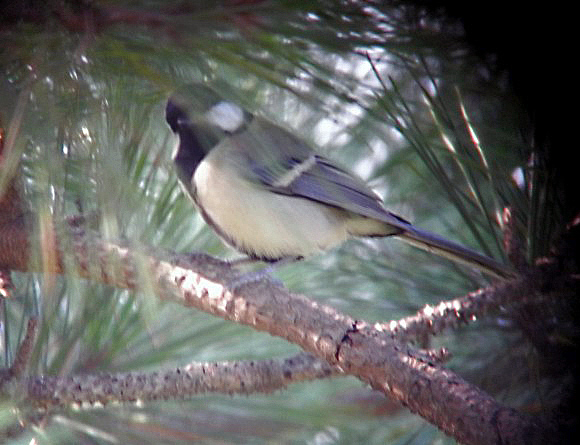
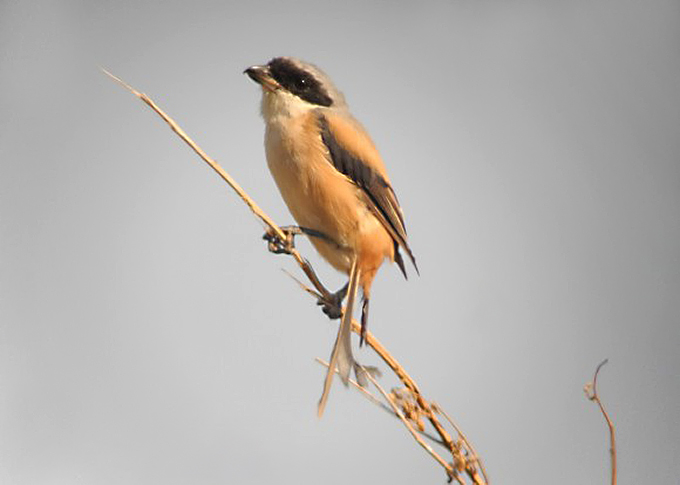
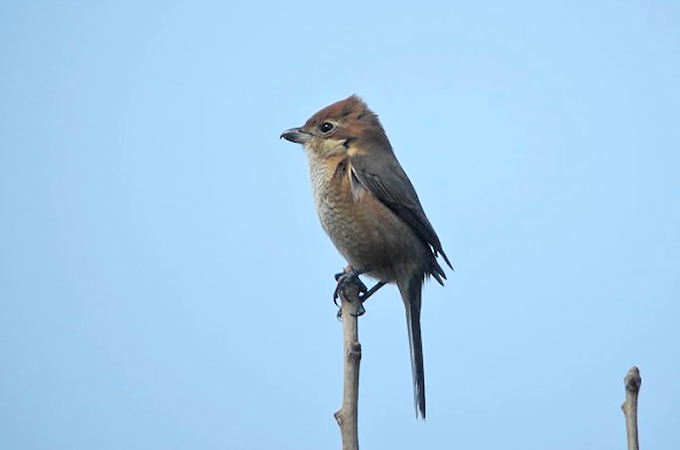


Yongjeong Island, October 14
At North Yongjeong the former natural wetland that presumably for expansion of the airport. Not far away, the artificial concrete-lined, it appears to serve mostly as a roost site. Perhaps in time to come it will fill with sediment and natural food.
Here 2600 mixed waterfowl comprised mostly Spot-billed Duck, Mallard, Eurasian Wigeon, Common Pochard, Falcated Teal, Common Teal, Tufted Duck, Northern Pintail and Northern Shoveler (in that order). Most notable perhaps, a gathering of 71 Little Grebe, in two distinct flocks. Passing through was a Sand Martin and 100+ Barn Swallow, some of them with buff-coloured underparts. Bizarrely, a swallow was seen to repeatedly dive-bomb a singing Northern/ Far Eastern Skylark, of which there were at least 40.
Also on the nearby scrubland, a roving Peregrine, 4 Richard’s Pipit, 2 Chinese Water Deer, an Oriental Greenfinch and Grey Wagtail.
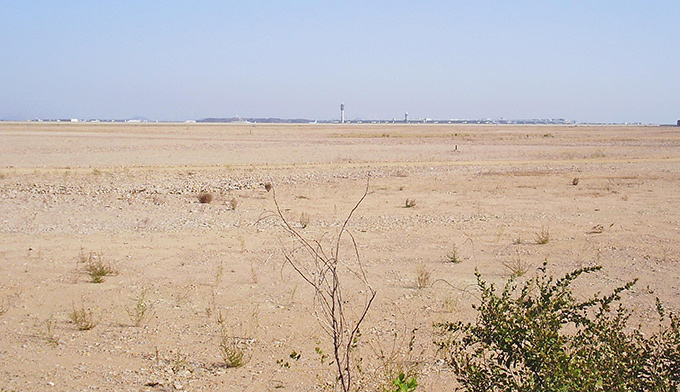
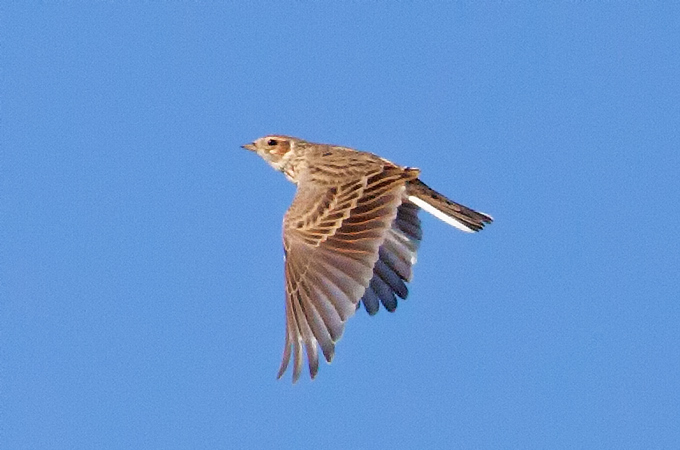

Bunsungsan, Gimhae, October 14
Eager to see what’s on the move, I headed to the temple (which is located at the peak of this mountain) for a Sunday morning sit. On the way up the mountain, I passed a large group Large-billed Crow (30). Arriving at sunrise, within seconds of getting off my bike I counted a flock of Olive-backed Pipits (87) ascending to the sky from the mountain’s edge. Soon another flock of Olive-backed’s (31) took flight in the same direction. I rushed to get to the top and get positioned for my sit. For the next 3 hours, every thirty minutes I took note of cloud cover, wind, and temperature. It was very exciting to watch so many groups of birds rapidly arrive and depart. The most numerous species was Eastern Great Tit, counting up to 358. Highlights include Tristram’s Bunting (11), Goldcrest (16), and Dusky Thrush (2), all personal firsts for the season at this site. Also observed were Arctic Warbler sensu lato (6), Yellow-browed Warbler (2), Pale Thrush (1), Brown-eared Bulbul (43), Marsh Tit (28), Daurian Redstart (48), Northern Hobby (1), Eurasian Kestrel (3), Grey-headed Woodpecker (2), Pygmy Woodpecker (3), White-backed Woodpecker (1), and Yellow-throated Bunting (1). After more visitors started to show, I decided to peel out and head to Hwapo Cheon, a nearby wetland.
A few more small flocks of Eastern Great Tits (including one of 17), Greater Spotted Woodpecker (3), Brambling (13), and what looked to be an Eastern Buzzard soaring high were seen on my route to Hwapo Wetland. Hwapo was a bit quiet (bird-wise) with mostly Spot-billed Duck, Eurasian Teal, and Great Egret. I was told it is a good spot for waterbirds during winter, so I’ll definitely check back again soon.
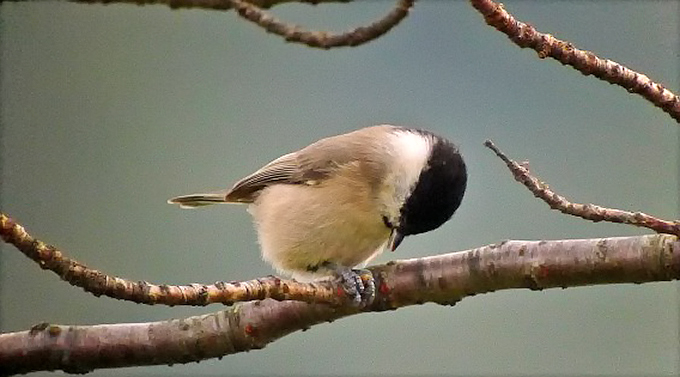
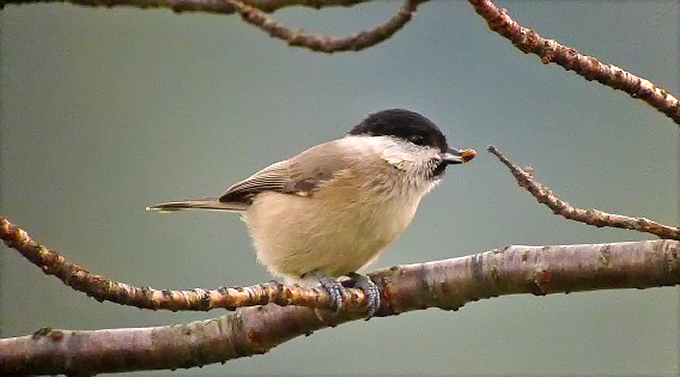

Uiwang, October 13
With news of large-scale movement underway and not having birded the previous weekend, I was quite eager to head out on the Saturday morning inspite of having a cold. Though I wanted to check out one of the nearer Yellow Sea Islands, circumstances compelled me to go to my nearest birding ground – Uiwang, which inspite of being a rather humble inland reservoir has produced some wonderful surprises in the past. It also happens to the place where I really learned about birds. Also being familiar with the habitat, birding is usually more relaxed and actually quite productive. In fact, I’ve spotted lifers on 3 of the 4 occasions I’ve been there this year!
Right from the onset, it was clear that there were significant number of Black-faced Buntings. Even a stingy counter would easily reach three digits. A more practical estimate is about 120~140 birds in a limited part of the reservoir edge and the adjoining fields. The size of the reservoir has been considerably reduced owing to ongoing construction, which had lead to reed growth. This in turn has attracted birds that prefer that habitat in quite large numbers. Other birds of note were 4 Yellow-browed Warblers, 7 Bean Geese flying overhead, 6 Marsh Tits, 2 Great Spotted Woodpecker, 4 Daurian Redstarts and the best of all (at least for me) was a female Siberian Rubythroat (thanks to Dr Moores for helping with the ID).
Bunsungsan, Gimhae, October 10
After word that Busan was experiencing high numbers of tits and raptors, I visited Bunsungsan in the afternoon to see how it compared. Eastern Great Tit were on the move, and in three hours I counted 134, largely of three main flocks. There was also a single flock of more than 200 Vinous-throated Parrotbill. Northern Hobby (5), Eurasian Kestrel (2) but surprisingly no other raptor; although a Grey-faced Buzzard was seen from the cafeteria window at our school (located at the bottom of the mountain) just the day before. Olive-backed Pipit (18), 12 of which were leaving at dusk. Brown-eared Bulbul (12+), Brambling (6), Daurian Redstart (7), Bull-headed Shrike (4), Varied Tit (2), Marsh Tit (17), Long-tailed Tit (5), Arctic Warbler sensu lato (2), Eurasian Jay (5), Grey-headed Woodpecker (2), and Japanese Pygmy Woodpecker (5).

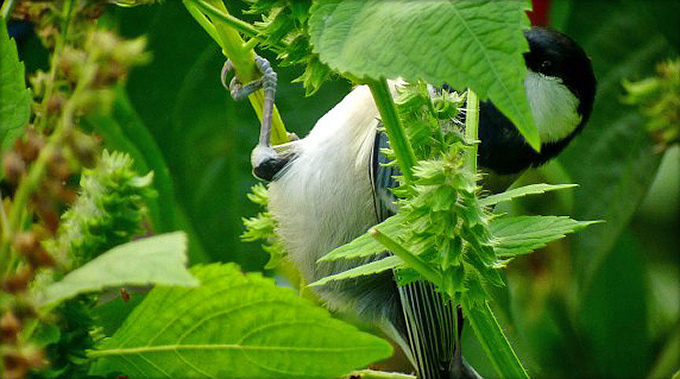
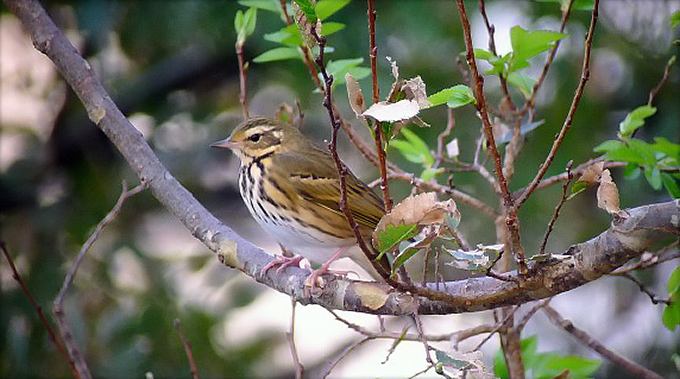

Igidae, Busan, October 10
The weather map showed a cold front crossing the ROK, bringing in winds from far to the north: usually good weather for visible migration (especially on Yellow Sea islands). The sight and sound of a flock of 140 Brown-eared Bulbul flying past the office window, followed immediately after by 15 Eurasian Jay and a Great Spotted Woodpecker, meant I had to down my morning coffee at high speed and head out to the southern end of Igidae for some “viz-migging”. Despite more ongoing construction, flocks of tits (Coal, Long-tailed, Eastern Great, Varied and Marsh) were feeding on the small headland, and several flocks of Brown-eared Bulbul could be seen undulating southward out over the bay. Between 9:00 and 11:00, a total of 1,238 Brown-eared Bulbul were counted flying either south (towards Taejongdae) or southeast (towards Japan) – with 595 in the first 30 minutes alone – with a Richard’s Pipit, two Brambling, the personal first Eurasian Siskin of the autumn and at least 60 Eastern Great Tit also logged. Numbers of passerines on the move dropped steadily from about 10:00, when the first Eurasian Sparrowhawks started to arrive in off the sea. Although some of the birds might have been local bloggers, between 10:00 and 13:30 about 45 Eurasian Sparrowhawk, 25 Eastern Buzzard (including at least one with an orangey-rufous tail, with broad dark sub-terminal band), five Northern Hobby, three Eurasian Kestrel, three Northern Goshawk, two Grey-faced Buzzard, two Black Kite, two Peregrine and two Eurasian Kestrel came in off the sea, either from the east or northeast, with most then gaining height and moving off slowly southwest over the city proper. The remaining area of open ground at the north of Igidae was also extremely birdy, with the Long-tailed Shrike still, 16 Daurian Redstart and at least 270 Eastern Great Tit. The woodland too contained several larger than usual bird-waves made up of many of the same species, with in addition five Goldcrest, five Yellow-throated Bunting, a further 30+ Eurasian Siskin and a possible Yellow-bellied Tit. Not much compared to Socheong on a good day, perhaps – but still really impressive for city-birding so close to home!


Geoje-do, October 7
There was plenty of early morning bird action at a quiet stream in a valley near town. A group of about twenty Japanese White-eye was joined by a mixed bag of Great, Varied, and Long-tailed Tit, and eventually by at least 30 Eurasian Siskin. Nearby, several Yellow-throated Buntings, Pale Thrush, and White’s Thrush, as well as Grey-headed, White-backed, and Japanese Pygmy Woodpecker were also seen. A pit viper Ussuri Mamushi Gloydius ussuriensis was seen hunting frogs at the stream.
On the water, Spot-billed Duck numbers are up, and in the harbor are good numbers of Black-tailed Gulls, and a few Black-headed as well.
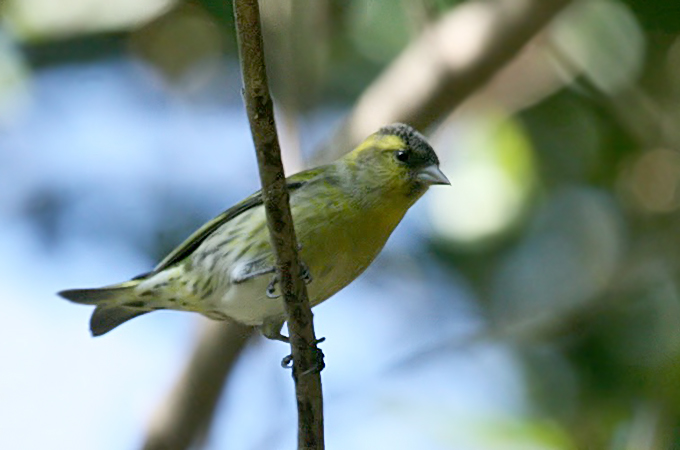
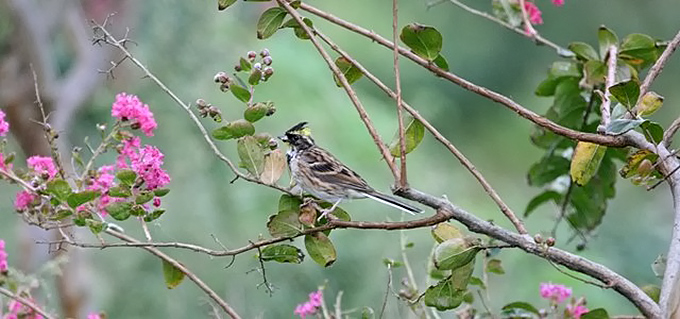


Songdo, October 6
At the nicely overgrown songdo golf course on the 6th, fairly productive, with nice views of e.g. a male Grey-backed Thrush and Rufous-tailed Robin. There were also, mysteriously, two other recently dead individuals on the path, lacking any obvious cause of mortality. Were they simply exhausted migrants- that were for some reason unable to build up adequate energy reserves?
Also present, an Olive-backed Pipit, late juvenile Barn Swallow, Coal and Marsh Tits, a Yellow-browed Warbler (in bright fresh yellowy plumage with two wingbars), calling Pale Thrush and Asian Stubtail, several Goldcrest and Black-faced Buntings, a Green Sandpiper and male Eurasian Sparrowhawk. In half an hour at the lagoon on the 13th, a colourful male Mandarin Duck in full regalia, also e.g. 4 Little Grebe, 4 Eurasian Wigeon and the first 2 Common Pochard of the season.
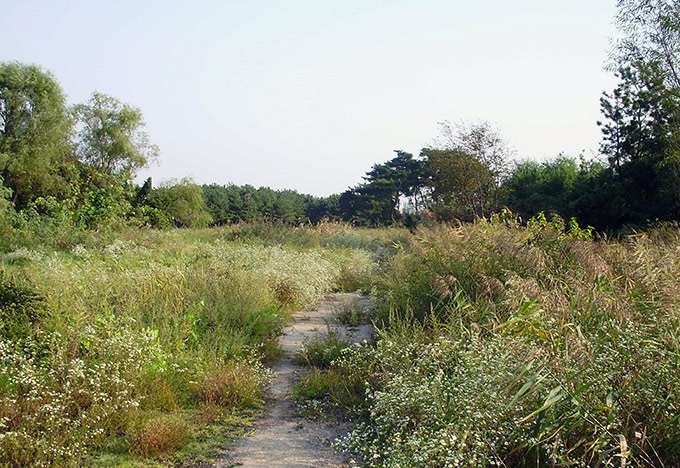

Igidae, Busan, October 5
A few hours in the field (well, woodland!) in Igidae found high numbers of several widespread species and a few especially notable ones. Most numerous were Vinous-throated Parrotbill, with two flocks of 100, one of which led a bird-wave that also included 40+ Eastern Great, five Marsh, 10 Coal and 10 Varied Tits, 20 Long-tailed Tit, two Japanese Pygmy Woodpecker and two “Arctic Warbler” (sensu lato). In the same flock, rarest of all in the ROK context was a single Yellow-bellied Tit (approximately only the third Busan record). Also present were two or more confiding White-backed Woodpecker, single Narcissus Flycatcher (heard only), Mugimaki and Yellow-browed Warbler. Finally, in more open ground near SK View, the Long-tailed Shrike was still present, and actively seeing off a Bull-headed Shrike.
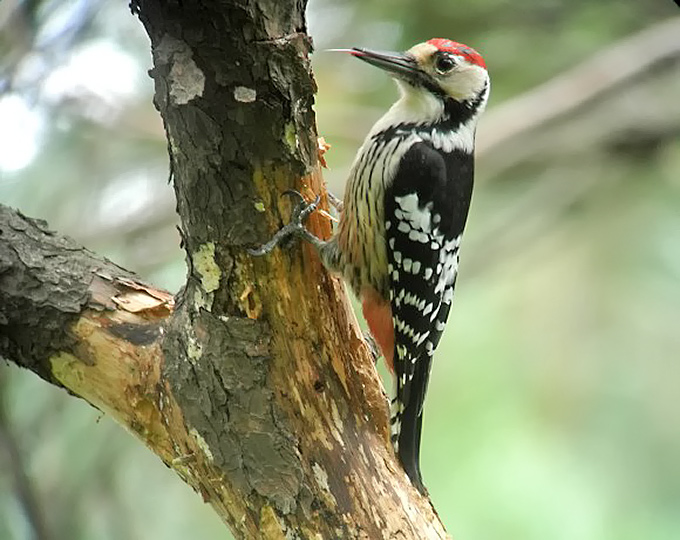
Busan, Namu Island, October 3
An offshore boat trip from Busan - venturing up to about 15 km out- gained close views of a number of Streaked Shearwater, a migrating Varied Tit low over the waves, a sizeable flock of Brown-eared Bulbul on the move, Common Teals and a Mallard, and even a Hobby hawking struggling dragonflies.
At the intriguing Namu Island, several km off the SE coast, 2 or 3 Blue Rock Thrush, 2 loitering Black Kite, a Japanese Pygmy Woodpecker, single Brambling, a Eurasian Kestrel, Coal Tit, Eastern Great Tits, Daurian Redstart, Peregrine, Grey Heron, another briefly landing flock of Brown-eared Bulbul, a presumed Kamchatka Leaf Warbler Phylloscopus examinandus and nominate Arctic Warbler P. borealis, both sound- recorded.
Closer inshore, a Vega Gull and several Black-headed Gull; small numbers of Shoveler, 3 Eurasian Wigeon, several Pintail, and delightfully close views of 80-90 Common Tern and several Whiskered Tern diving after polyps.
Exploring Daema-deung spit, (at the mouth of the Nakdong) proved rewarding, with particularly good numbers of Kentish Plover, Sanderling and Mongolian Plover, a juvenile Sharp-tailed Sandpiper, several Dunlin, Eurasian Curlew, Red-necked Stint, 9 Pacific Golden Plover, a few Broad-billed Sandpiper, Terek Sandpiper and Ruddy Turnstone. Among a sizeable group of Mongolian Gull, several Taimyr Gull, a juvenile Slaty-backed Gull, 3 “Eastern” Oystercatcher, single overflying Red-throated Pipit, 3 Richard’s Pipit and a Western Osprey watching the bay from atop a post.

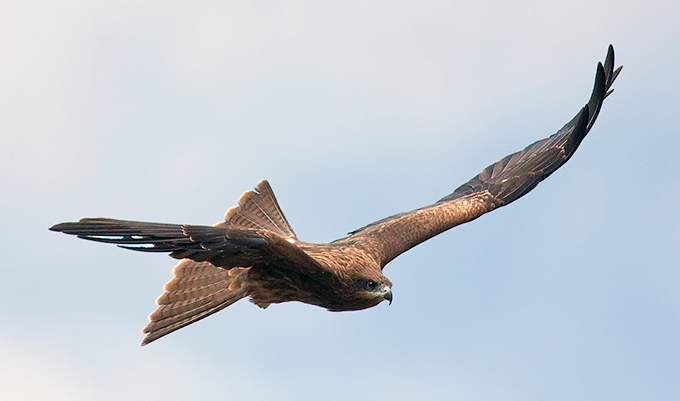

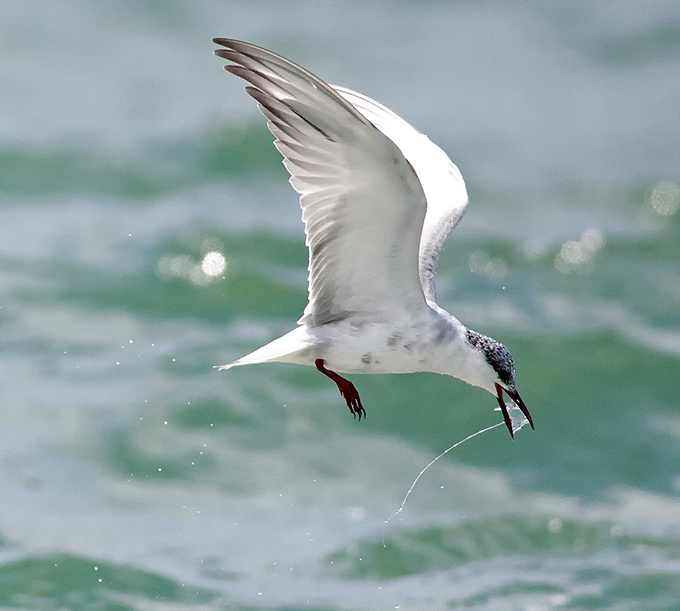
Seochong Island, October 3
The morning ferry back to Incheon was quite productive. The highlights include 3 Flesh-footed Shearwaters and 6 Pomarine Skuas (including 1 dark morph individual)
Seochong Island, October 2
Starting before sunrise at North Point, the highlight include a female Pine Bunting, about 6~7 Chinese Nuthatches, 3 Meadow Buntings. Later in the morning at the lighthouse gully, more movement of passerines was observed. There were a few Dusky Warblers, 2 Common Rosefinches, a female Mugimaki Flycatcher. 40+ Oriental Honey Buzzards and many more Red-rumped Swallows were also seen in the sky. The stream at the 2nd village produced a White’s Thrush.

Geomam, October 1
Most notable at Geomam on the 1st, the first skeins of 32 Tundra Bean Geese and 5 Greater White-fronted Geese. There were handfuls of Black-faced Bunting and one Chestnut Bunting in the nicely untidy field-edges. Also present were eg. Hobby, Oriental Reed Warbler, Common Snipe and Common Kingfisher. New to the scene, 2 Richard’s Pipit, an Arctic Warbler, an Olive-backed Pipit, a Bull-headed Shrike, and 2 presumed Japanese Bush Warbler- not seen well, but calling with characteristic low tutting.
Seochong Island, October 1
With clear blue skies and a moderate wind, it was a perfect day to be outdoors. Early in the morning walking towards the lighthouse, I encountered Chinese Grosbeak (~6), a single female Japanese Grosbeak and a Grey Faced Buzzard. The lighthouse gully was alive with activity. A male Blue and White Flycatcher, a flock of around 30 Eastern Great Tits, similar numbers of Varied Tits, more than 50 Yellow Browed Warblers. This also attracted a Hobby and a Chinese Sparrowhawk. At the lower part of the gully, I also encountered 2 Radde’s Warbler, a single Japanese Pygmy Woodpecker and more Black Faced Buntings. At around 9am, more raptors appeared including a Black Kite and an Osprey. The highlight of the trip came later in the day in quick succession. At first a flock of atleast 12 Yellow Bellied Tits mixed with a similar sized flock of Eastern Great Tits and a few Coal Tits. Then a pair of Chinese Nuthatches. Later during the day, accompanied by another Korean birder, we found more Yellow Bellied Tits and 2 Chestnut Flanked White-eyes. Light Vented Bulbuls were encountered near the fish farm area.
